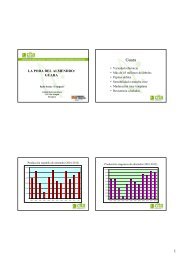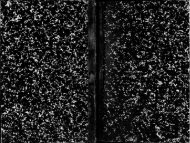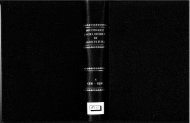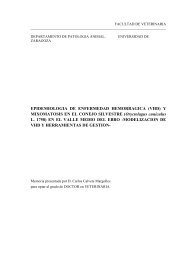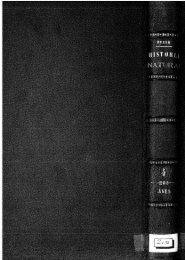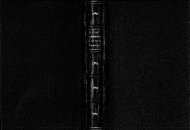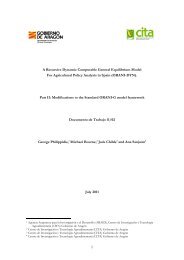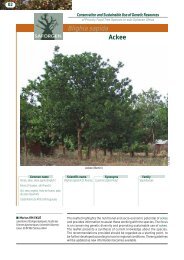SOFTWARE FOR ON-FARM IRRIGATION SCHEDULING ... - citaREA
SOFTWARE FOR ON-FARM IRRIGATION SCHEDULING ... - citaREA
SOFTWARE FOR ON-FARM IRRIGATION SCHEDULING ... - citaREA
Create successful ePaper yourself
Turn your PDF publications into a flip-book with our unique Google optimized e-Paper software.
175<br />
176<br />
177<br />
178<br />
179<br />
180<br />
181<br />
182<br />
183<br />
184<br />
185<br />
186<br />
187<br />
188<br />
189<br />
190<br />
191<br />
192<br />
193<br />
194<br />
195<br />
196<br />
197<br />
198<br />
bloom to beginning of pit hardening; 2) stage FII, from beginning to end of pit<br />
hardening; 3) stage FIII, from pit hardening to fruit ripening (harvest); and 4) stage FIV,<br />
from harvest to leaf fall (postharvest). FIV was further divided into early and late<br />
postharvest phases (before and after September 1). A seasonal RDI schedule results<br />
from the overlapping of crop and fruit growth stages, and from the use of crop and<br />
deficit irrigation coefficients.<br />
Fig. 3 presents the relationships between FAO stages and fruit growth stages. These<br />
stages are used in the RIDECO software to establish standard crop water requirements<br />
and the timing of RDI. The initial FAO stage starts with bud swelling, while the initial<br />
fruit growth stage starts with blooming. The dates for bud swelling and blooming are<br />
manually set for each subunit; default values are provided for each crop and crop cycle.<br />
2.4. Crop and deficit irrigation coefficients<br />
Complete Kc data sets are not available for all the target geographical areas, with the<br />
exception of the recommendations reported by García-Vera and Martínez-Cob (2004) for<br />
the Ebro Valley (NE Spain, provinces of Huesca, Zaragoza and part of Teruel). García-<br />
Vera and Martínez-Cob (2004) adapted the FAO 56 crop coefficients (single Kc approach)<br />
to the local conditions for a number of crops, including stone fruits, and were adopted in<br />
the RIDECO software as default values (Table 1). Users can replace these default values<br />
by local, more accurate estimates; new crops and varieties can also be added to the<br />
database. The tree canopy diameter is used in the software to estimate the percent<br />
shaded area and to determine whether evapotranspiration needs to be adjusted<br />
(decreased). The approach by Fereres and Castel (1981) was used for this purpose.<br />
Crop evapotranspiration under RDI was estimated by reducing water requirements at<br />
the fruit development stages least sensible to water stress. This was accomplished by



